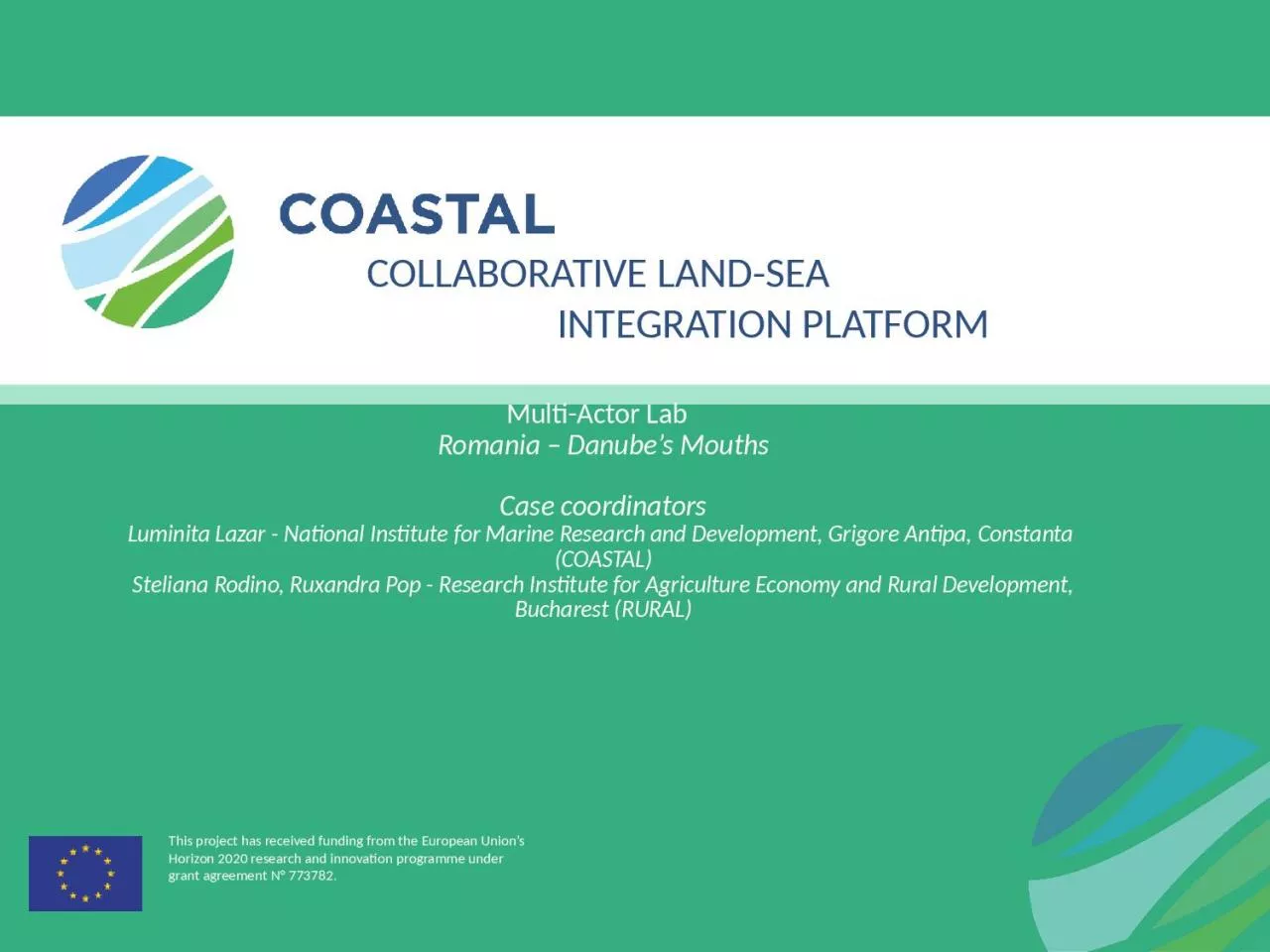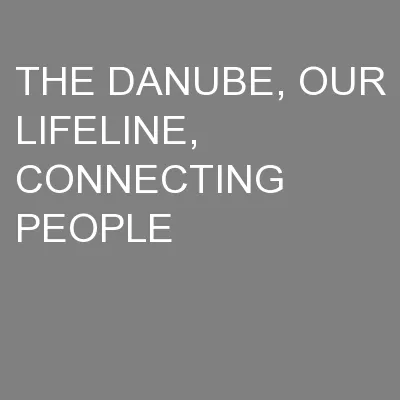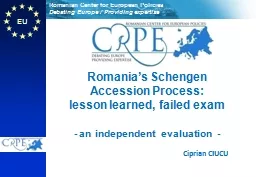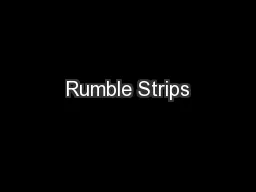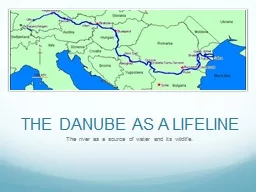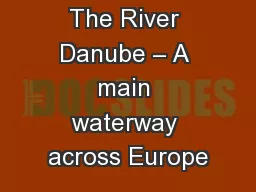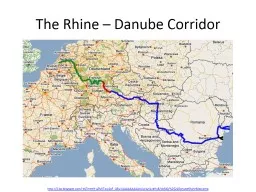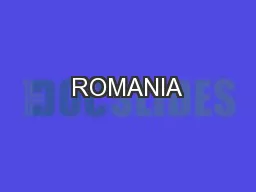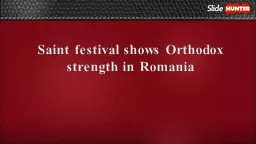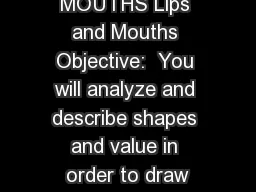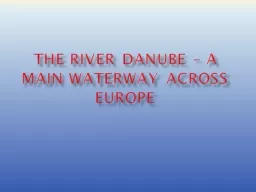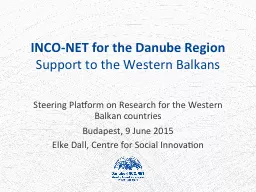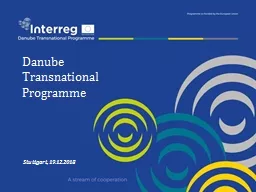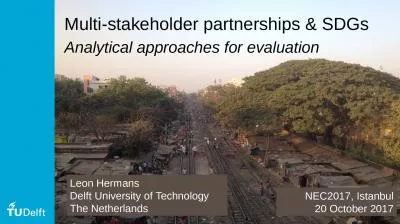PPT-Multi-Actor Lab Romania – Danube’s Mouths
Author : daisy | Published Date : 2024-02-09
Case coordinators Luminita Lazar National Institute for Marine Research and Development Grigore Antipa Constanta COASTAL Steliana Rodino Ruxandra Pop Research
Presentation Embed Code
Download Presentation
Download Presentation The PPT/PDF document "Multi-Actor Lab Romania – Danube’s..." is the property of its rightful owner. Permission is granted to download and print the materials on this website for personal, non-commercial use only, and to display it on your personal computer provided you do not modify the materials and that you retain all copyright notices contained in the materials. By downloading content from our website, you accept the terms of this agreement.
Multi-Actor Lab Romania – Danube’s Mouths: Transcript
Case coordinators Luminita Lazar National Institute for Marine Research and Development Grigore Antipa Constanta COASTAL Steliana Rodino Ruxandra Pop Research Institute for Agriculture Economy and Rural Development Bucharest RURAL. The river as a source of water and its wildlife.. Wildlife. The Danube basin is home to a diverse system of natural . habitats:. Germany's . Black Forest, . the . Alps and Carpathian Mountains. , . the Hungarian Puszta Plains, . W O R DS. This project has been funded with support from the European Commission.. This publication [communication] reflects the views only of the author, and the Commission cannot be held responsible for any use which may be. lesson learned, failed exam. . - an independent evaluation -. Ciprian CIUCU. CONTEXT. . Little . know in the public space, poor public debate (. until the first signs of . delay). . The idea of zero priority vs. Schengen stake and benefits for . #3 –Repurposing. Ephesians . 4:29-32 . Do not let any unwholesome talk come out of your mouths, but only what is helpful for building others up according to their needs, that it may benefit those who listen. The river as a source of water and its wildlife.. Wildlife. The Danube basin is home to a diverse system of natural . habitats:. Germany's . Black Forest, . the . Alps and Carpathian Mountains. , . the Hungarian Puszta Plains, . About the Danube . …. The Danube is one of Europe's great rivers-and since the Main-Danube Canal opened in 1992, ships have been able to navigate all the way from Amsterdam to the Black Sea. .. ULM. http://3.bp.blogspot.com/-aSTmeh9-uZM/Tqw2aF_QEuI/AAAAAAAAAro/w1yIj1ckHy8/s1600/%. 2521DanubeRhineMap.bmp. . There are many . landlocked. countries in Europe. . . http://d-maps.com/m/europemin/europemin09.gif. By Nathalie, Rachel M and Joanna. . This is our project on Romania. We really enjoyed learning about Romania. We hope you learn as much as we did and enjoy this project. . INTRODUCTION. . PHYSICAL. SLIDE TITLE. BUCHAREST, Romania – The feast of St. . Dimitrie. of . Basarobov. in Bucharest is an annual demonstration of the strength of Christianity in Romania, and the dominance of the Orthodox branch.. DRILL: . GET IPAD AND MIRROR!. What . shapes. could you use to draw lips?. What shapes are . your lips. ? Describe them. Which is bigger/ fuller?. Where is the . The River Danube – A main waterway across Europe About the Danube … The Danube is one of Europe's great rivers-and since the Main-Danube Canal opened in 1992, ships have been able to navigate all the way from Amsterdam to the Black Sea S. upport to the Western Balkans. Steering Platform on Research for the Western Balkan countries. Budapest, 9 June 2015. Elke Dall, Centre for Social Innovation. Danube-INCO.NET uses an inclusive geographical definition. Stuttgart, 19.12.2018. 1. Topics already addressed by PA1 projects under 1. st . & 2. nd. call . 2. Main topics and elements of the 3. rd. call under PA1. 3. General DTP requirements for a successful project application. Analytical approaches for evaluation. NEC2017, Istanbul. 20 October 2017. Leon Hermans. Delft University of Technology. The Netherlands. This presentation. Impact evaluations and multi-stakeholder partnerships.
Download Document
Here is the link to download the presentation.
"Multi-Actor Lab Romania – Danube’s Mouths"The content belongs to its owner. You may download and print it for personal use, without modification, and keep all copyright notices. By downloading, you agree to these terms.
Related Documents

